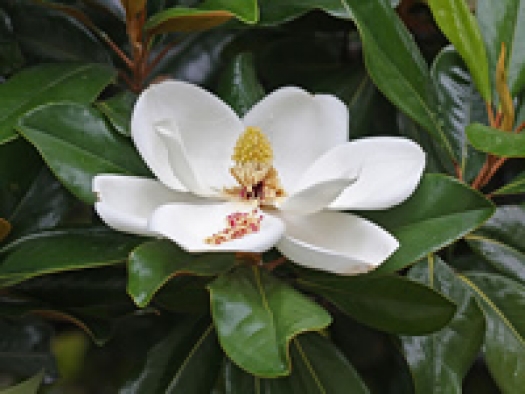For the last 40-plus years, I've carried a Swiss Army knife in my pocket. I'm not talking about the one that's 3 inches thick and includes a full-size spoon and fork. Instead, I carry a smaller model called the Spartan. I can't tell you how many I've worn out, lost, or had confiscated or stolen, but I feel so lost without one that I keep a couple spares around. I use my knife several times a day, to cut open boxes, unscrew battery compartments, tighten eyeglass frames, open bottles, slice limes and jerky, pick out a splinter, clean my teeth, pry open a paint can, adjust the carburetor on my motorcycle, open a bottle of wine…
It's not the best hunting knife, but I can clean a fish and even gut a deer if necessary. Unlike one-use tools, it's always in my pocket when I need it and will almost always get the job done. It's my portable survival kit that I've used all over the world. When there were no other tools to be found, I once used it to clean and re-gap the sparkplugs on an old airplane so we could fly out of a remote jungle in Nicaragua.
It does so many different things, and does them well enough, that it's a great adjunct to other tools. The versatility of my Swiss Army knife immediately came to mind when I began looking into a compound called honokiol (rhymes with Pinocchio with an -ol at the end: ho-noh-key-ol).
Tradition Plus Research
Honokiol is one of several polyphenols that have been isolated from the bark and seed cones of the magnolia tree. Polyphenols are compounds that typically give plants their color and flavor and, in addition, act as antioxidants. Magnolol is another one of these polyphenols in the magnolia species and shares some of honokiol's biological properties.
Very few people in this country have even heard of honokiol. In combination with magnolol and numerous other ingredients, it has been found in a few Japanese and Chinese formulas used to treat asthma and digestive disorders. The compounds have also been administered as a tea extract in those parts of the world. In just the last few years, efforts have been underway to isolate and extract honokiol by itself and determine what other biological activity it might have. As I tracked and reviewed this research data, I found the amount and variety of beneficial activity stemming from this one compound is staggering, particularly when it comes to treating cancer. This is why I believe honokiol is the Swiss Army knife of cancer treatment.
Treatment for Many Cancers
First I'll say that honokiol is not a cure-all or the ultimate form of cancer treatment. Cancer is a complicated and complex disease and I doubt there will ever be a single cure. The research on honokiol is in the preliminary stages, mostly done using cancer cells or animals. More human work needs to come, and I'm currently following several of those studies. Preliminary work, however, has shown that honokiol does exactly what you want a cancer therapy to do. It turns off cell division in some cancer cells, and in others it induces them to kill themselves (a process called apoptosis). Honokiol promotes antiangiogenisis – that is, stopping the formation of new blood vessels that feed a tumor, effectively starving the tumor.
Honokiol has exhibited these properties so far in the following cancers: myeloma, leukemia, melanoma, sarcoma, colon, lung, bladder, ovarian, esophageal, breast, and prostate (androgen-dependent and androgen-independent forms). One study found that prostate cancer cells that failed to respond to hormone withdrawal treatment underwent apoptosis (cell death) when honokiol was given. (Cancer 07;109:1279–1289)
Unlike many promising cancer therapies, honokiol is nontoxic. You don't have to worry about killing the patient before killing the cancer. Therapeutic levels of honokiol can be achieved by taking the compound orally, since it isn't destroyed by the digestive system. And, unlike most polyphenols, it can cross the blood-brain barrier. This alone opens up the ability to treat primary brain tumors, as well as cancers that have metastasized.
All of these attributes and the continuing studies support the idea that honokiol is the one compound that can enhance almost every other form of cancer treatment, natural or otherwise.
Back in August 2010, I wrote about three unique products being used successfully to treat various cancers, particularly prostate and breast cancer: the modified citrus pectin product called PectaSol-C, ProstaCaid, and BreastDefend. Research is currently underway testing any synergy and enhancement of the effects of these products when a new extract of honokiol is added. The final results aren't available, and I'm not at liberty to release the early data, but what I have seen is dramatic – particularly in regard to PectaSol-C and ProstaCaid. I wouldn't hesitate to recommend using these products together in the treatment of cancer.
On another front, I've learned that this new honokiol extract is also being tested on liver cancer cell lines. The research findings will be of particular interest considering both the increases in liver cancer we're beginning to see and the fact that the treatment options for liver cancer are limited and largely ineffective.
As an Alternatives reader, you're learning about honokiol long before most doctors or the general public. Right now only a handful of researchers are even aware of honokiol. They are working in just a few laboratories overseas and a couple here in the US.
Until just recently, one of the primary difficulties of working with honokiol was that there wasn't a consistently reliable, high-quality extract available. All of the extracts were a combination of honokiol and magnolol, along with other unknown components – and even then, the percentages of the various compounds were highly unreliable. Unfortunately, this is still true except for one product.
By the time you get this issue a product called HonoPure will be available. This is the first available product that is 98% honokiol. Having a consistent honokiol product like HonoPure is going to accelerate the amount of clinical research that can be done. I have no doubt we'll now start seeing a lot of positive reports from both researchers and the public on the uses of honokiol. And it won't just be with cancer therapy. Now we're talking about the 3-inch-thick, 2-pound Swiss Army knife with a built-in flashlight, flash drive, pliers, scissors, magnifying glass, and spoon and fork.
Beyond Cancer With Honokiol
In addition to its antitumor properties, honokiol is a strong antioxidant. It also exhibits strong anti-inflammatory properties in a fashion that could make it effective in the treatment of autoimmune diseases like rheumatoid arthritis, psoriasis, and inflammatory bowel disease. It's these same properties that the Japanese and Chinese have capitalized on in their formulations for treating asthma and digestive disorders.
Some studies have demonstrated that honokiol can inhibit viral replication and may be useful in the treatment of HIV and AIDS. And, although not as strong as most common antibiotics, honokiol does exhibit antimicrobial activity. Without any toxicity problems or other side effects, it has been used successfully to treat infections of several of the oral organisms associated with periodontal disease. And recently it was found to inhibit both vancomycin-resistant enterococci (VRE) and methicillin-resistant S. aureus (MRSA), which are becoming very serious health threats due to our overuse of antibiotics. (Planta Med 98;64:367–369) (J Pharm Sci 81;70:951–952) (Chem Biodivers 04;1:530–537)
I'll mention this again, only because I seem to be the only one who puts honey in the same sentence with VRE and MRSA. If you ever have a wound infected with one of the antibiotic-resistant strains of bacteria, for God's sake use a raw honey dressing, preferably manuka honey, if available. Fill in any cavities and holes with honey, then apply honey to a dressing pad and apply directly to the wound. As long as there is drainage, change the honey-soaked dressing every day. After the drainage stops the dressings can be left in place for 5 to 7 days.
I mentioned earlier that honokiol is an antioxidant. Studies have been performed to determine just how effective it could be at stopping lipid peroxidation (fat cells breaking down and turning rancid). This is the beginning of cardiovascular disease. By scavenging free radicals, honokiol was 1,000 times more effective than alpha-tocopherol (one of the forms of vitamin E) at preventing lipid peroxidation. It has been proposed that it might be a very effective way of preventing damage to the heart muscle following heart surgery. (Biochem Pharmacol 94;47:549–553) (Planta Med 96;62:503–506)
Honokiol, or more accurately extracts from the Magnolia species, may have some potential as a safe, natural antidepressant or anxiolytic (anti-anxiety medicine). From the research, however, when it has been used for this purpose it's been combined with numerous other herbs, at doses considerably lower than those used for cancer. One of the traditional Japanese Kampo formulations I alluded to earlier (Saiboku-to) is sometimes used in this manner.
And other research suggests that honokiol might also be beneficial in the treatment of metabolic syndrome/type 2 diabetes.
How to Use HonoPure
When it comes to dosages for different conditions, many are still being determined. This is especially true when considering there has never been a product like HonoPure with such a consistent, high percentage of honokiol. And much of the research is relatively new.
The recommended dosages here are based on the available studies and recent clinical work.
- Active cancer, therapeutic level: 1 gram, 3x/day, with food.
- Long-term maintenance: 500 mg, 2x/day (total of 1 gram/day), with food.
- Prevention: Start with 500 mg 2x/day, and after one month the dosage can be dropped to 500 mg 1x/day, or 250 mg 2x/day.
Each bottle of HonoPure contains 120 capsules with 250 mg in each capsule, a total of 30 grams per bottle.
HonoPure is available from EcoNugenics. You can contact them at www.honopure.com or 800-521-0160. A single bottle sells for $99, but Alternatives readers who buy multiple bottles will receive a discount: Buy 3 and you'll get 1 free or buy 5 to get 2 free, bringing the cost down to about $71/bottle.
For active cancer, at the highest therapeutic dosage, 3 bottles a month would be needed; for long-term maintenance, one bottle a month; and for prevention, a bottle every other month.
At this point you're probably wondering how HonoPure fits in with my other recommendations for treating or preventing cancer, such as Avé Ultra and AHCC. To be honest, I can't say at this point, because there simply hasn't been enough research on products other than the PectaSol-C, ProstaCaid, and BreastDefend I mentioned earlier. But I believe it's important for you to know about honokiol; it may save your life one day.
This may be the first time you've heard about honokiol, but it won't be a secret for long. Once the researchers get hold of HonoPure and the consistent data start rolling in, more and more people are going to understand just what a breakthrough this "new" 2,000-year-old Swiss Army plant really is.
Originally published in Alternatives, Vol. 14, No. 3, March 2011. Used with permission.



